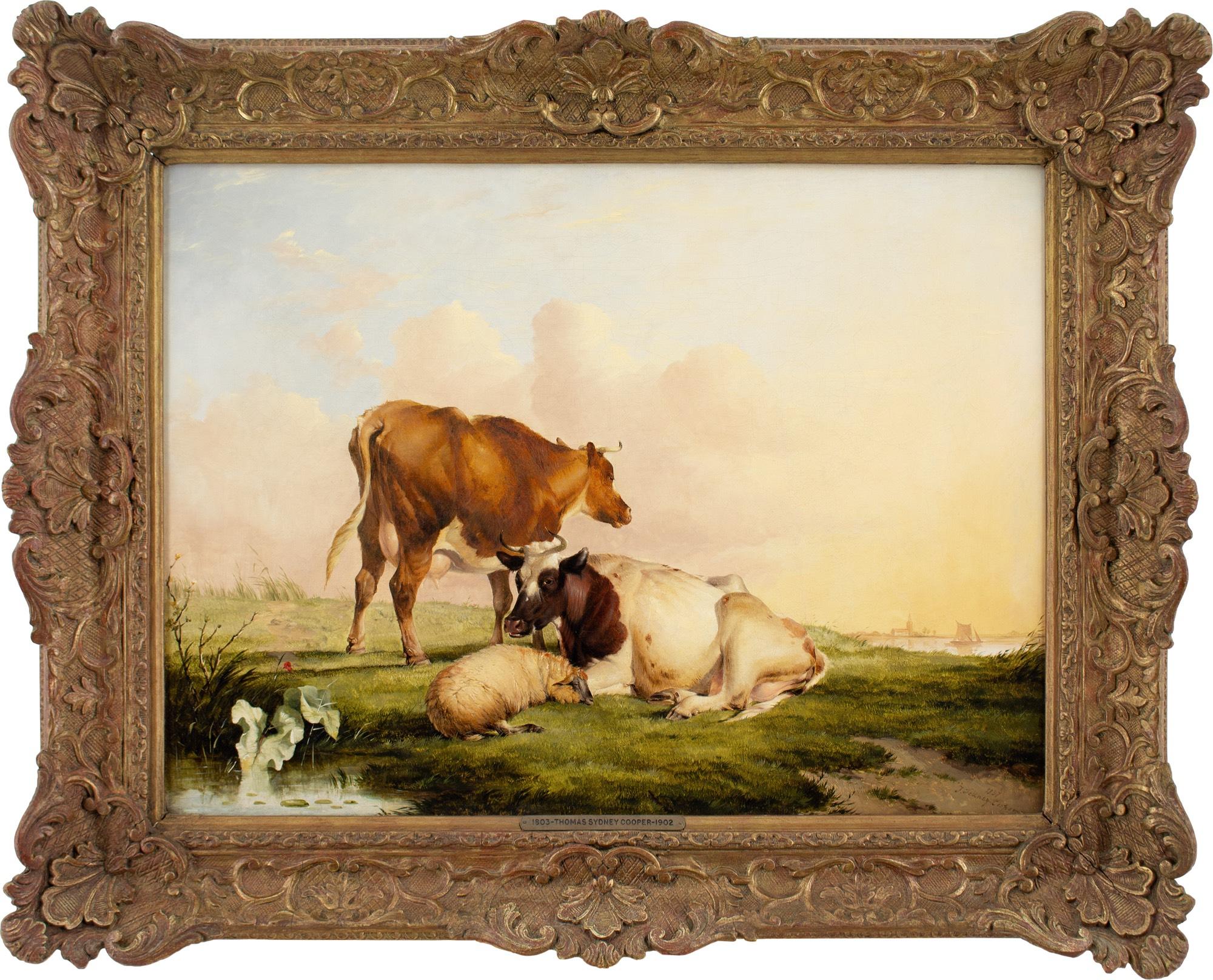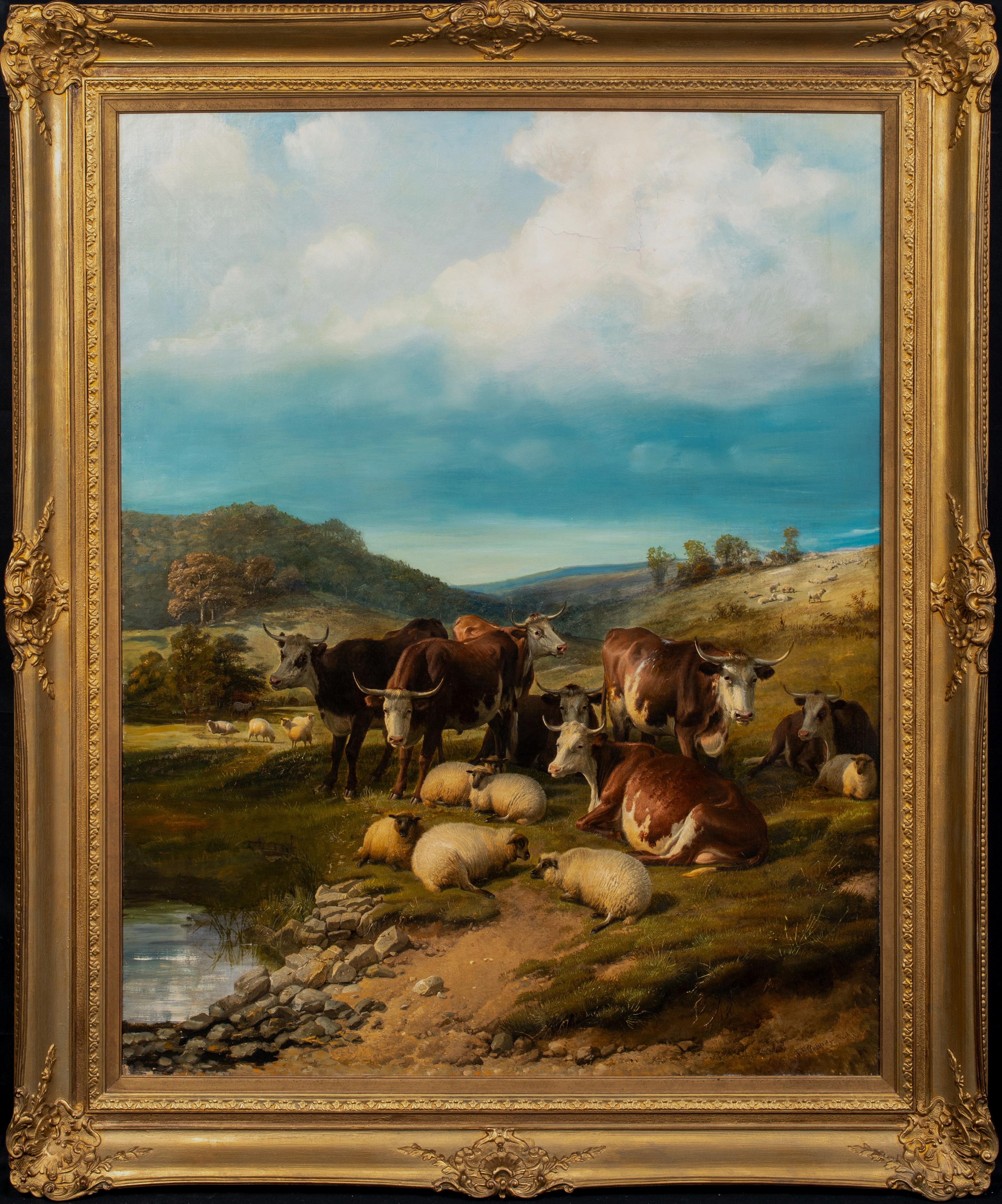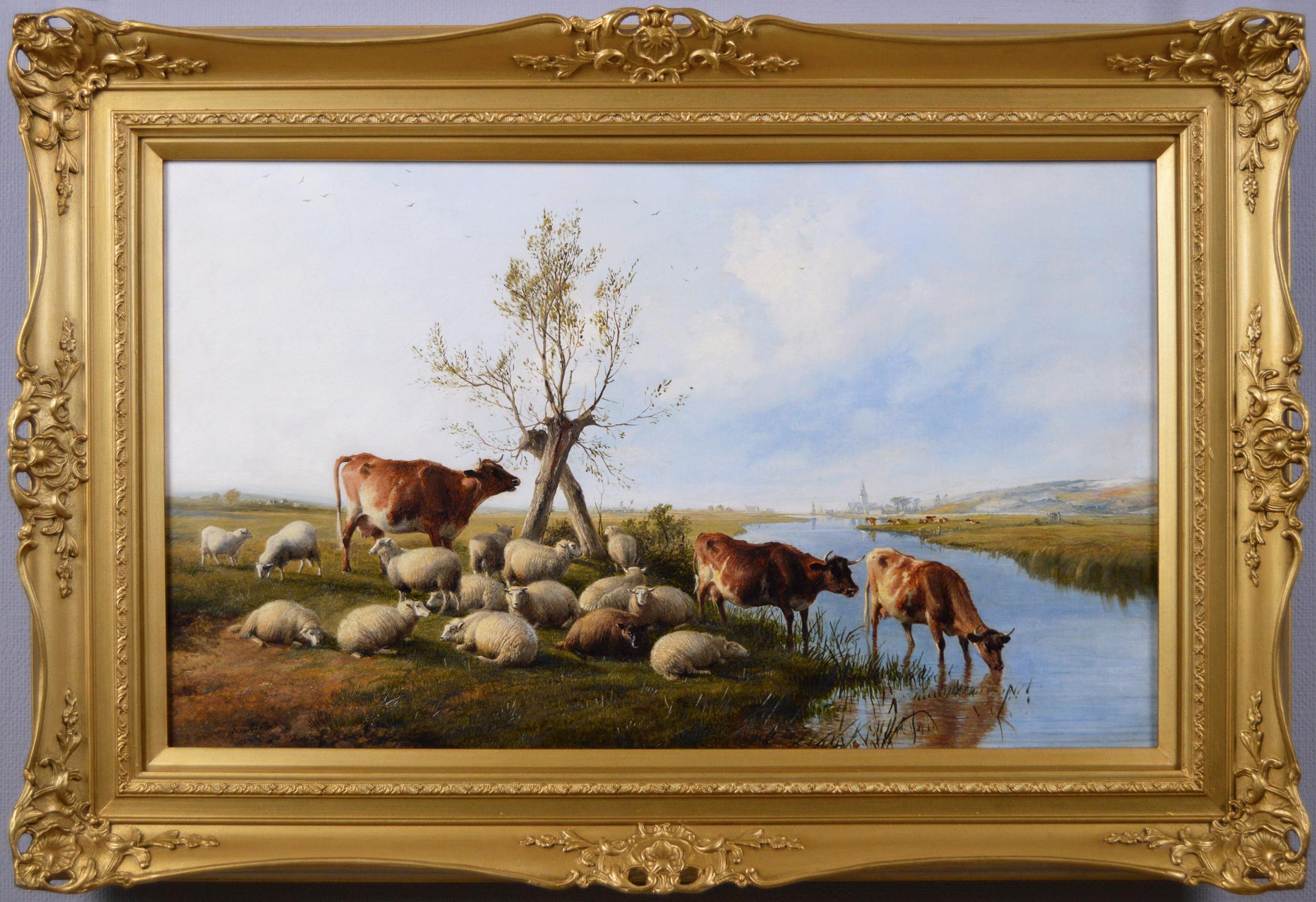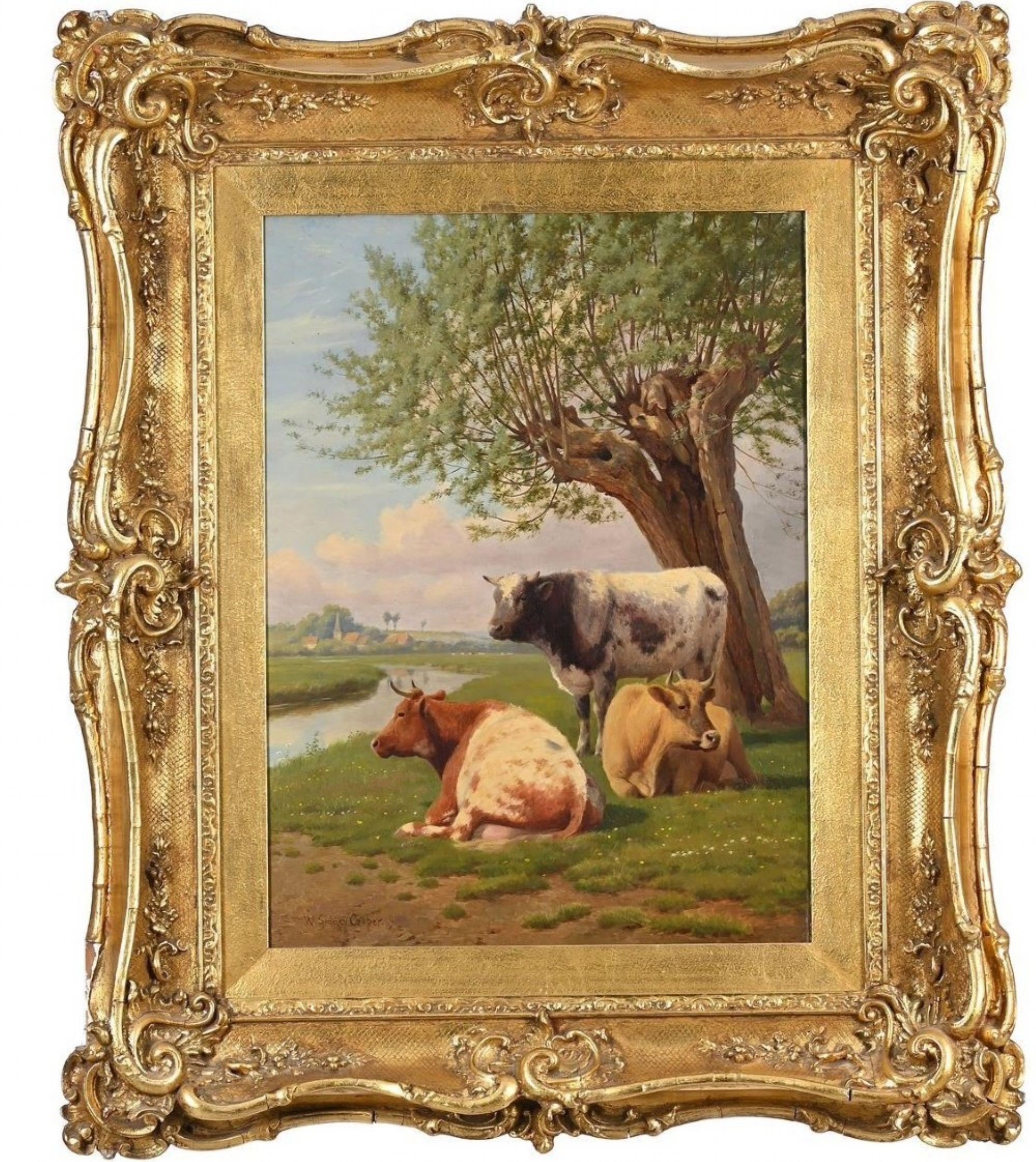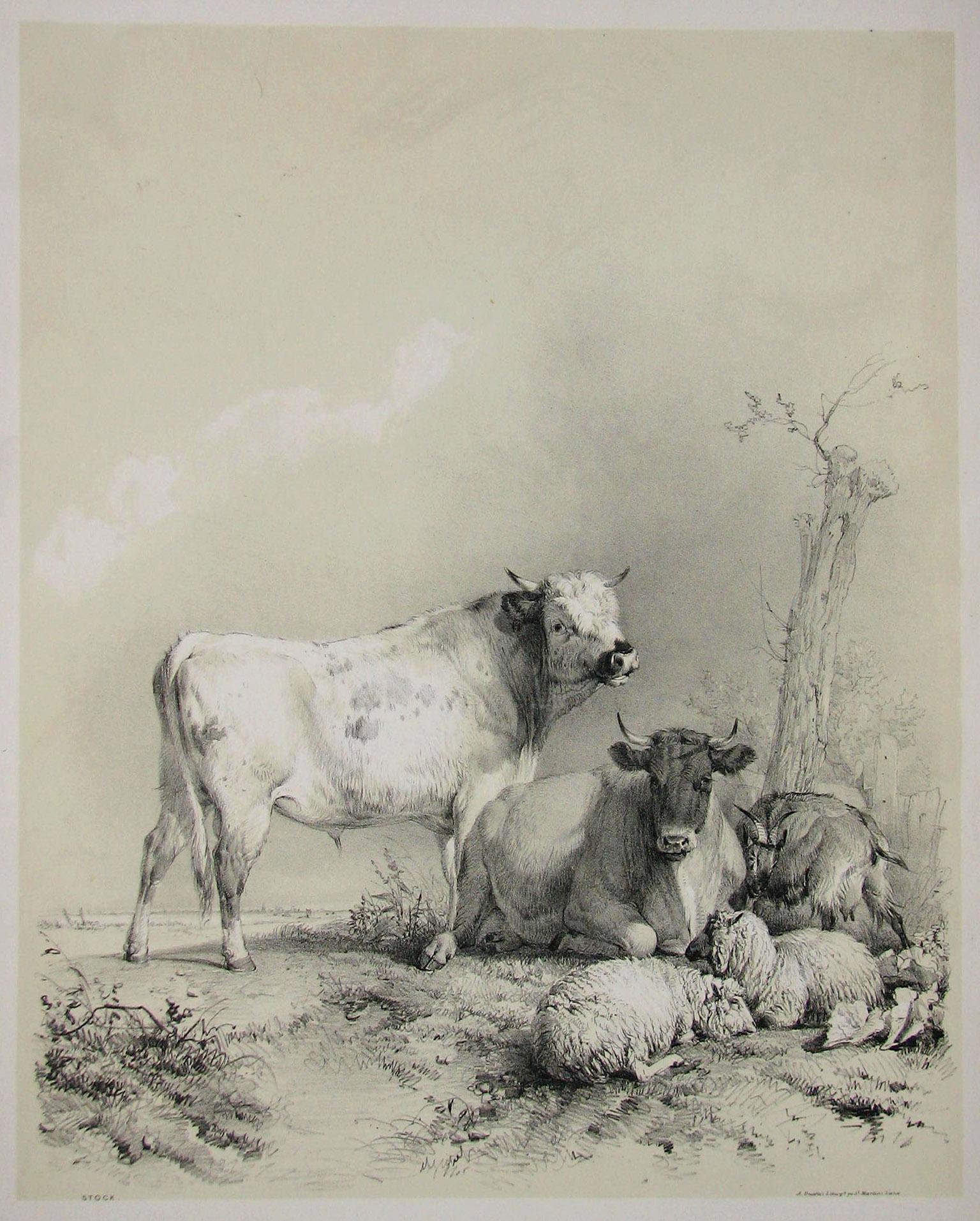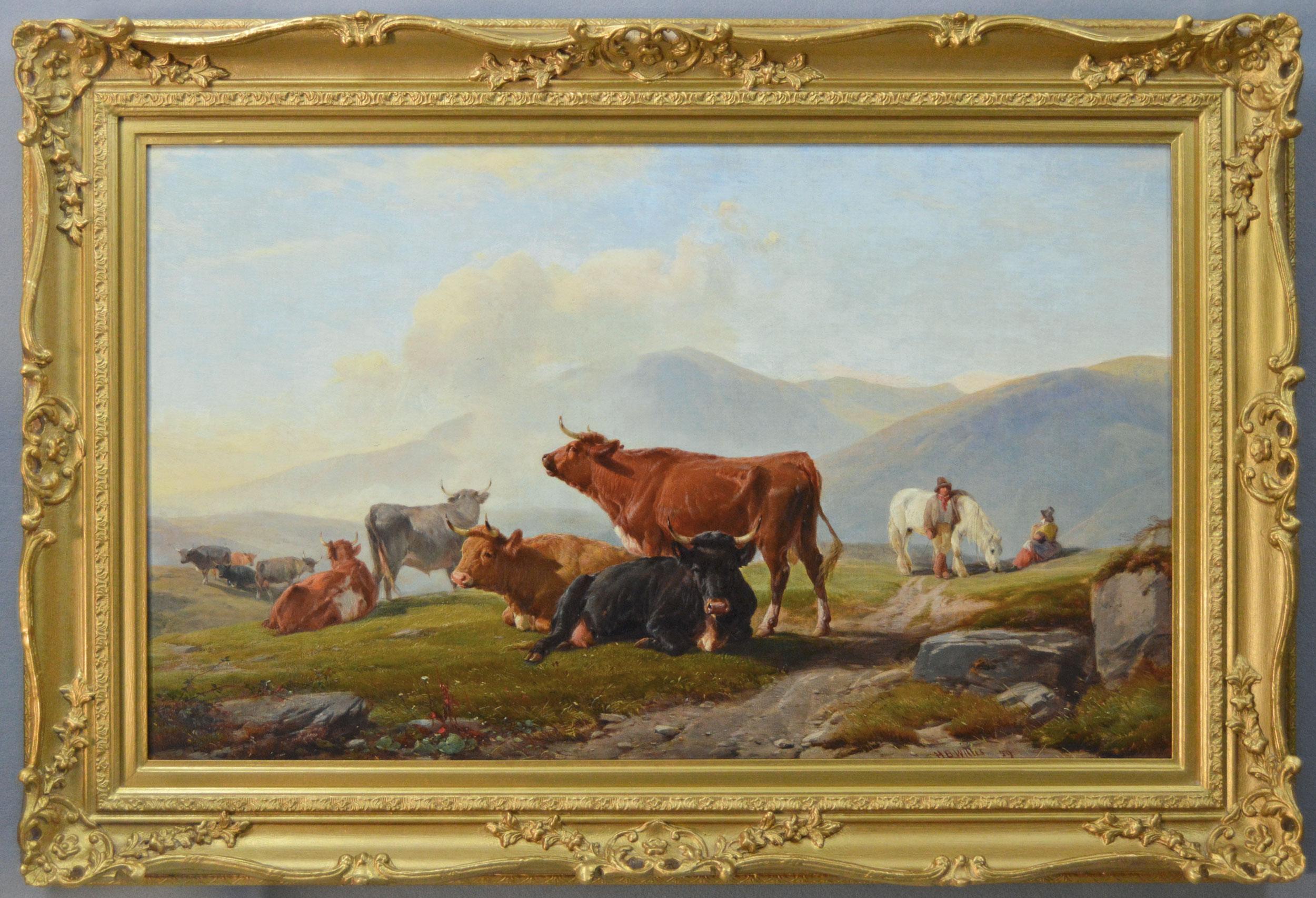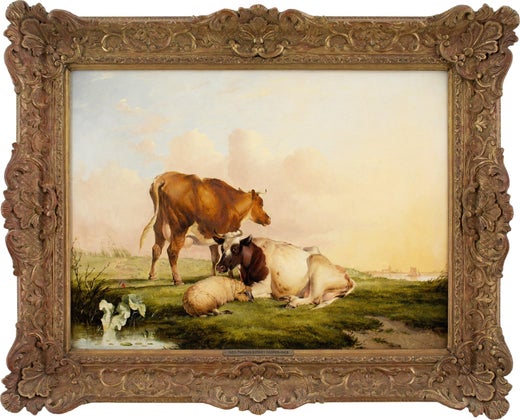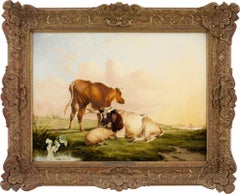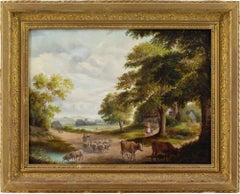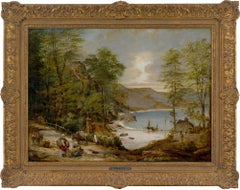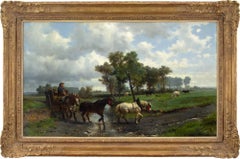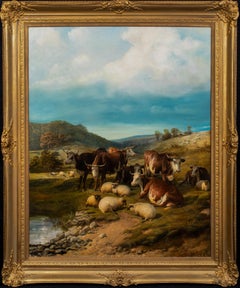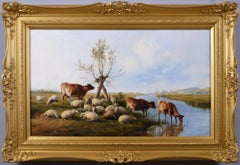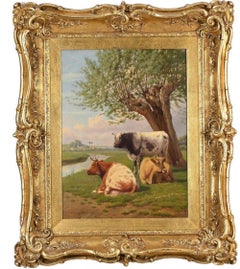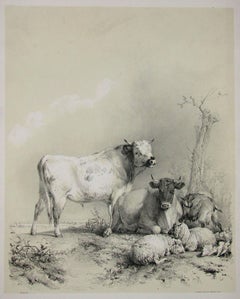This charming mid-19th-century watercolour by British artist Thomas Sidney Cooper RA (1803-1902) depicts two sheep and a cow in a landscape. Cooper was a distinguished British painter of landscapes, animals and portraits who became one of the foremost masters of his genre despite facing extraordinary circumstances. He was affectionately known as “Cow Cooper”.
Born in Canterbury, Kent, his early years were marked by abject poverty as his father, William Cooper, deserted the family, leaving his mother to raise five children alone. Food prices were high due to the effects of the Napoleonic War and he was encouraged to learn a gainful trade to generate much-needed income.
At 12 years old, he began an apprenticeship as a coach builder, during which he was taught the basics of mixing colours. He did so while continuing to sketch from nature - escaping into the surrounding countryside at every opportunity. He also undertook numerous drawings of Canterbury Cathedral with many of these sold to the clergy and occasional passing aristocrats. In his 1890 autobiography, he recalls being provided with pencils and paper by the illustrator, George Cattermole RWS (1800-1868), who took pity on the state of his materials.
Cooper was determined to persevere with his artistic pursuits, despite the wishes of his mother, and, by chance, happened to impress a local painter of theatrical scenery. Despite being gravely ill, ‘Mr Doyle’ taught the aspiring lad, who subsequently gained work at a travelling theatre company.
Following his time with the theatre, his uncle took him to London, where he first studied the sculptures at the British Museum before enrolling as a ‘probationer’ at Royal Academy schools. Henry Fuseli RA (1741-1825) was his teacher during this period whereby his primary task was to study the works of antiquity. Possessing a ‘good eye’, his drawings were met with much approval and he was admitted as a full student.
However, around 1825, while on the cusp of achieving his dream, he was sent back to Canterbury to live with his mother - his Academy hopes now in tatters. He described this period as a particularly difficult one during which he considered switching careers.
In 1827, together with a good friend, Cooper visited the continent where he travelled with no particular plan - preferring to live, once again, on his wits. For a while, he worked as a signwriter and a drawing master, while also producing numerous portraits for village locals. During a three-year stay in Belgium, he met, by chance, the great Eugène Joseph Verboeckhoven (1798-1881) - a celebrated painter of animals. Verboeckhoven was generous, offering his time for free and encouraging the young Englishman to take up oil painting. Both were keen admirers of the Dutch and Flemish masters, such as Paulus Potter and Albert Cuyp. Cooper was deeply inspired.
From this point on, having overcome a series of trials and tribulations, his career gathered momentum - soon exhibiting at both the Royal Society of British Artists and Royal Academy. In 1842, with his popularity ever-increasing, his 'Intercepted Raid, Ettrick Shepherd' was sold at Sotheby’s for a record-breaking sum of £37,500, which established him firmly in the minds of collectors and dealers alike. He was elected an Associate of the Royal Academy a few years later and a full member in 1867.
With his career firmly established, Cooper returned to Kent and lived in the picturesque rural village of Harbledown near Canterbury. He acquired numerous animals, allowing him to paint from life, and encouraged others to do the same.
“I have always found that the continual looking at and pondering over the beautiful and ever-changing effects of Nature keeps one from mannerism and self; and it is my decided opinion that all landscape-painters should live in the country. Those silvery atmospheric effects, with their attendant colouring of tender greys, which may be noticed during certain phases and changes of the weather; the soft yet warm tints from an evening sun, with the lengthening shadows stealing over the surrounding landscape, and those lovely gleams glinting through the foliage of the darkening trees, are effects which are never, or rarely, seen in London, where the sun (when there is any) is either scorching and glaring, or shining through a foggy atmosphere with the colouring of a copper pan in a kitchen.”
Later in life, in a remarkable act of philanthropy, he opened the Sidney Cooper Gallery and Art School to help children from disadvantaged families. It bears a plaque with a dedication to his mother. He exhibited over 200 works at the Royal Academy.
Thomas Sidney Cooper RA is represented at the National Gallery, Tate Britain, the V&A Museum and at The Beaney in Canterbury.
Signed in the lower left, framed and glazed.
Provenance: Private collection, UK.
Artist’s auction maximum: £150,000 for ‘Saint Augustine's, Canterbury (1833)’, Oil on canvas, Sotheby's, Stokesay Court - Shropshire - Paintings - Drawings And Prints, London, 1994 (lot 546).
